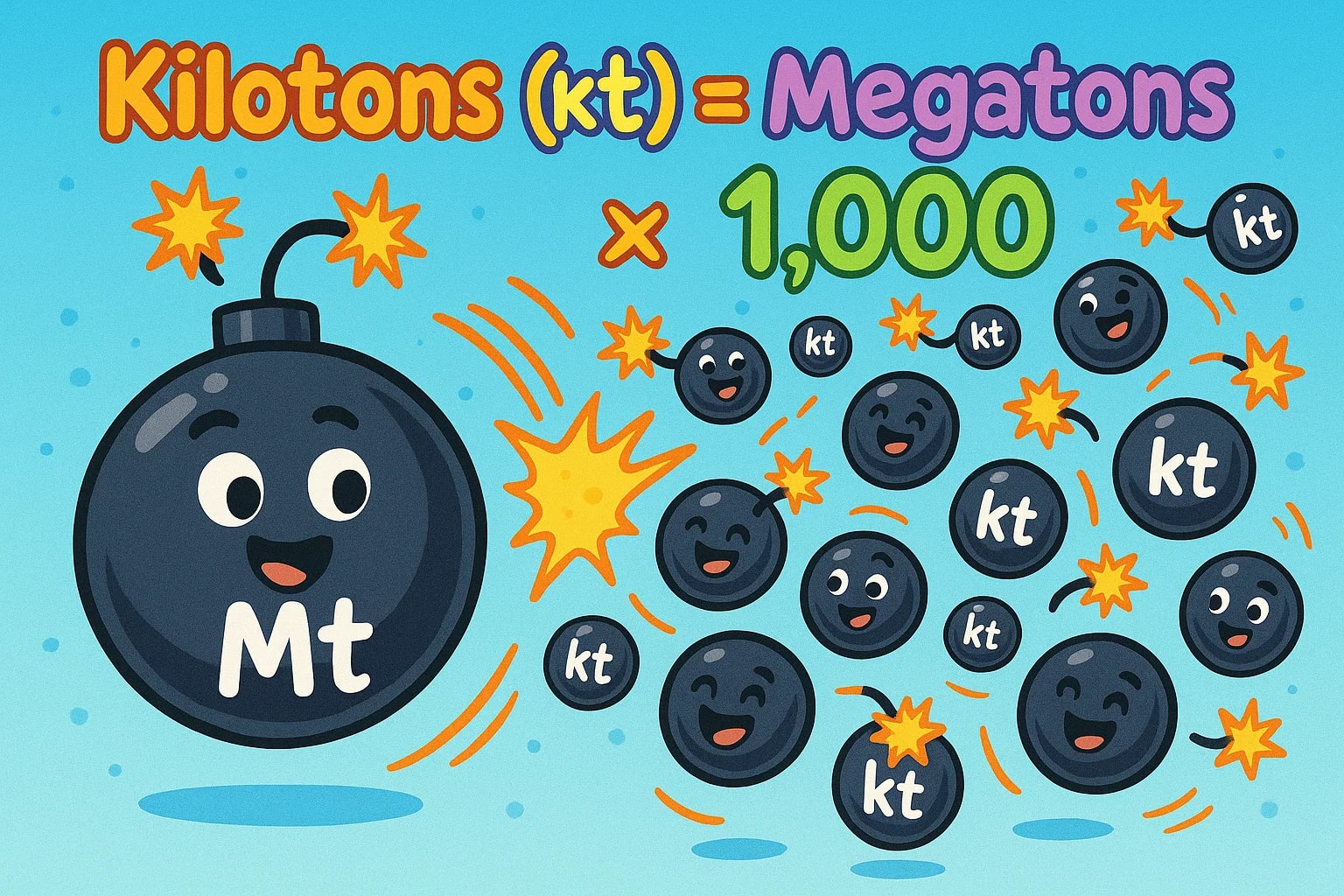Megaton to Kiloton – How to convert Mt to kt
When dealing with megaton and kiloton measurements, the context is often dramatic — from nuclear weapon yields to energy released by natural disasters. These units, though both metric-based, describe vastly different scales. Whether you’re analyzing scientific reports or historical data, converting between them is straightforward but essential for clarity. Here’s how the conversion works, where these units are used, and why they still matter in research and global records.

What is a megaton (Mt)?
A megaton represents 1 million metric tons (1 × 10⁶ tons). It’s also widely used as a measure of energy equivalence, particularly for nuclear weapons, where one megaton equals the explosive power of 1 million tons of TNT, or about 4.184 petajoules (4.184 × 10¹⁵ joules).
Historically, megatons have been used to:
-
Quantify large-scale nuclear test yields during the Cold War.
-
Measure annual carbon emissions or energy output in global environmental and industrial reports.
-
Estimate energy released by catastrophic natural events, such as asteroid impacts.
What is a kiloton (kt)?
A kiloton equals 1,000 metric tons (1 × 10³ tons). Like the megaton, it’s commonly used for energy equivalence: one kiloton equals the energy of 1,000 tons of TNT.
Kilotons are frequently referenced in:
-
Reports on nuclear explosions, including both weapons tests and non-military detonations.
-
Seismological studies, where energy from earthquakes is sometimes expressed in kiloton or megaton TNT equivalents.
-
Energy and climate datasets, where smaller events or regional outputs are better scaled to kilotons than megatons.
Converting the Numbers
Because both are tied to the same base unit (tons), the math is simple:
1 megaton = 1,000 kilotons (1 Mt = 1,000 kt)
Formula:
Kilotons (kt) = Megatons (Mt) × 1,000
Example:
The 1961 Soviet Tsar Bomba, the most powerful nuclear test ever, had a yield of 50 megatons. Converted:
50 × 1,000 = 50,000 kilotons.
For precise and fast results, you can use our Energy Converter or check out more Conversion tools.
Did you know?
-
The Comprehensive Nuclear-Test-Ban Treaty Organization (CTBTO) catalogs every recorded nuclear explosion since 1945, with many yields expressed in kilotons for smaller tests and megatons for larger ones, ensuring comparability across decades.
-
According to the United States Geological Survey (USGS), the 2011 Tōhoku earthquake in Japan released energy roughly equivalent to 476 megatons of TNT, a figure often broken into kilotons for seismic modeling.
-
NASA impact assessments often describe asteroid strikes in kilotons for smaller objects (tens to hundreds of meters) and in megatons for larger bodies, converting between the two to assess damage zones.
-
During arms reduction talks in the 1980s, arms control agencies regularly translated nuclear stockpile yields from megatons into kilotons to align treaty verification with standardized, smaller-scale reporting.
When Numbers Shaped Nuclear Policy
In the 1980s, during negotiations for the Intermediate-Range Nuclear Forces (INF) Treaty, most weapons were classified by yields originally reported in kilotons. However, strategic planners needed to compare the destructive potential of entire arsenals, which often exceeded hundreds of kilotons per weapon. By converting total stockpiles into megatons, negotiators could better assess the broader strategic balance.
According to declassified records from the U.S. Department of State, this dual-unit reporting — megatons for total force, kilotons for individual weapons — became standard practice in arms control, ensuring technical precision while maintaining strategic context.

Final Thoughts
Converting megaton to kiloton is as simple as multiplying by 1,000, but it’s vital for making sense of energy yields and mass figures in global studies, from nuclear treaties to natural disaster assessments. These conversions allow scientists, policymakers, and historians to communicate clearly across scales and contexts.
For fast, accurate calculations, use our Energy Converter or explore other Conversion tools to handle any scale effortlessly.

